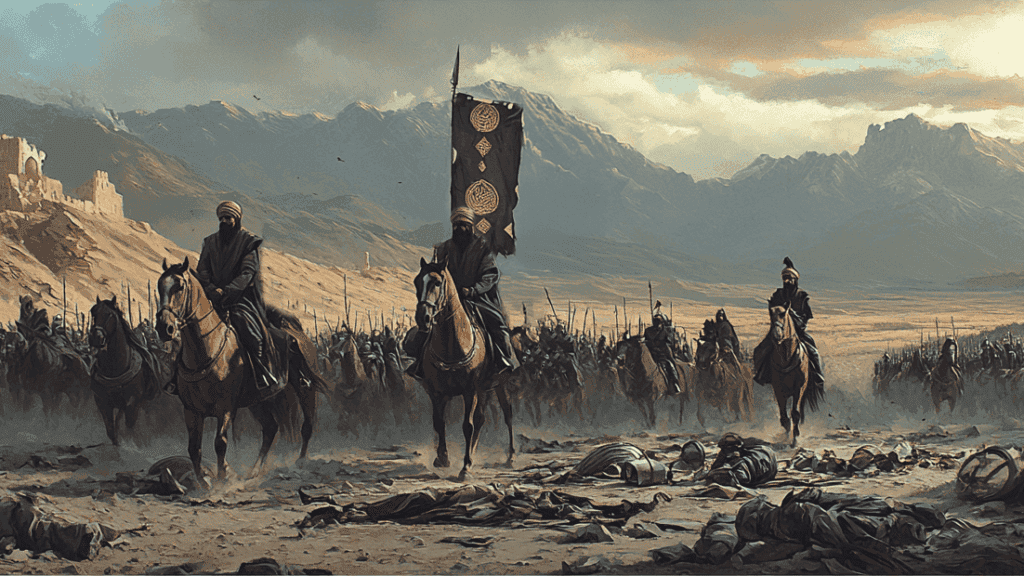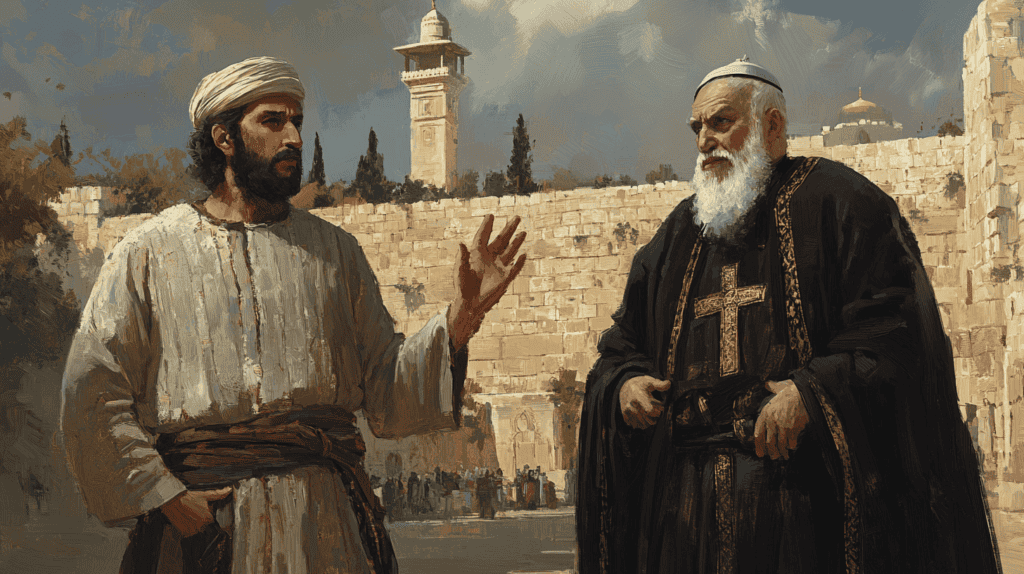
In the year 638 CE, a momentous event occurred that would reshape the religious and political landscape of the Middle East for centuries to come – the Muslim capture of Jerusalem. This pivotal moment marked the end of Byzantine rule in the holy city and ushered in a new era of Islamic governance that would last for over four centuries.
The Road to Jerusalem
The Muslim conquest of Jerusalem was part of the larger Arab expansion that began after the death of the Prophet Muhammad in 632 CE. Under the leadership of the Rashidun Caliphs, Muslim armies swept across the Middle East, defeating both the Byzantine and Sassanid empires.

By 636 CE, Muslim forces had achieved a decisive victory against the Byzantines at the Battle of Yarmouk. This crucial battle opened the way for further conquests in the Levant, including the prized city of Jerusalem. The Byzantine Emperor Heraclius, recognizing the dire situation, withdrew to Constantinople, leaving Jerusalem vulnerable.
The Siege Begins
In late 636, Muslim armies under the command of Abu Ubayda began to encircle Jerusalem. The city, led by Patriarch Sophronius, was well-fortified and prepared for a siege. Sophronius, a skilled diplomat, knew that outright resistance against the Muslim forces would be futile. Instead, he employed a clever strategy to buy time and negotiate favorable terms for the city’s inhabitants.
Sophronius declared that he would only surrender the city to the Caliph himself, Umar ibn al-Khattab. This demand was likely made with the expectation that the Caliph, residing in distant Medina, would not make the arduous journey to Jerusalem. The Muslim commander Khalid ibn al-Walid even attempted to trick Sophronius by pretending to be the Caliph, but the patriarch saw through the ruse.

The Arrival of Caliph Umar
Contrary to Sophronius’ expectations, Caliph Umar decided to accept the invitation and make the journey to Jerusalem personally. This decision speaks volumes about the importance Umar placed on the conquest of the holy city. The Caliph’s journey from Medina to Jerusalem became the stuff of legend, with stories emphasizing his humility and piety.
One famous anecdote describes Umar and his servant alternating between riding their single camel, with Umar walking while the servant rode as they entered Jerusalem. This tale, whether historically accurate or not, served to illustrate the Caliph’s humble nature and set the tone for the Muslim takeover of the city.

The Peaceful Surrender
Upon Umar’s arrival in early 637 (or 638, according to some sources), negotiations for the city’s surrender began in earnest. The result was a remarkable document known as the Umariyya Covenant or Treaty of Umar. This agreement laid out the terms of surrender and established the rights of Jerusalem’s inhabitants under Muslim rule.
The key points of the treaty included:
- Guarantees of safety for the people of Jerusalem, their property, and their places of worship.
- Protection of Christian churches and assurances they would not be converted to mosques.
- Freedom of religion for Christians and Jews, with no forced conversions to Islam.
- Implementation of the jizya tax on non-Muslims in exchange for protection and exemption from military service.
This treaty set a precedent for the treatment of conquered peoples that would be followed, to varying degrees, throughout the Muslim world for centuries to come.
A Symbolic Moment
One of the most iconic moments of the conquest came when Umar was invited to pray in the Church of the Holy Sepulchre, one of Christianity’s holiest sites. According to tradition, Umar declined, choosing instead to pray outside the church. This decision was made to prevent future Muslims from using his actions as a pretext to convert the church into a mosque.
This act of respect for Christian holy sites helped set the tone for relatively peaceful coexistence between Muslims, Christians, and Jews in Jerusalem for many years to come. It stands in stark contrast to the destruction and persecution that had often accompanied changes of power in the city’s long history.

The Aftermath
The Muslim conquest of Jerusalem had far-reaching consequences for the region and the world:
- Religious Significance: Jerusalem became the third holiest city in Islam, after Mecca and Medina. The Dome of the Rock and Al-Aqsa Mosque would be built on the Temple Mount in the following decades, cementing the city’s importance to Muslims.
- Population Changes: Jews, who had been banned from living in Jerusalem under Byzantine rule, were allowed to return to the city. This led to a gradual shift in the city’s demographic makeup.
- Cultural Exchange: The Muslim rule of Jerusalem facilitated increased interaction between Islamic, Christian, and Jewish scholars, leading to a rich period of intellectual and cultural exchange.
- Political Realignment: The loss of Jerusalem was a significant blow to Byzantine prestige and marked the beginning of the empire’s long decline in the region.
- Architectural Transformation: Over the coming centuries, Jerusalem’s skyline would be transformed with the addition of Islamic architecture, most notably the Dome of the Rock.

The Islamization of Jerusalem
While the initial conquest was marked by tolerance, the process of Islamization in Jerusalem was gradual but steady. The city, known in Arabic as Bayt al-Maqdis or Al-Quds, began to take on a more Islamic character:
- Language: Arabic slowly replaced Greek and Aramaic as the dominant language of administration and daily life.
- Architecture: Islamic buildings, including mosques and madrasas, were constructed throughout the city.
- Pilgrimage: Jerusalem became a major pilgrimage site for Muslims, particularly after the construction of the Dome of the Rock and Al-Aqsa Mosque.
- Scholarship: The city became a center of Islamic learning, attracting scholars from across the Muslim world.
Despite these changes, Jerusalem remained a multi-religious city, with significant Christian and Jewish populations continuing to live and worship alongside the growing Muslim community.

Long-Term Impact
The Muslim conquest of Jerusalem in 638 CE set the stage for nearly five centuries of Islamic rule in the city. This period saw times of both conflict and coexistence between the three Abrahamic faiths. The Islamic character imparted to the city during this time remains evident to this day, despite the many political and religious changes Jerusalem has undergone in the intervening centuries.
The relatively peaceful nature of the conquest and the terms of the Treaty of Umar established a model of religious coexistence that, while not always perfectly implemented, stood in contrast to the often violent changes of power that had characterized Jerusalem’s earlier history. This model would be challenged and ultimately broken by the arrival of the Crusaders in 1099, marking the end of this first period of Muslim rule in Jerusalem.




